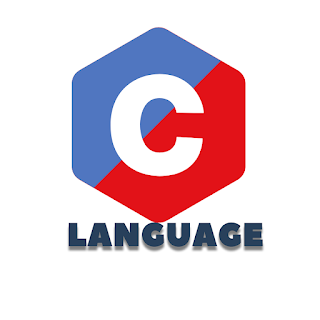Best C Course in Vizag JNNC Technologies - Boost Your Programming Skills Today!
C course in vizag
Looking for the best C course in Vizag to enhance your programming skills? Find out how to choose the perfect course with our comprehensive guide! Boost your programming knowledge.
Best C Course in Vizag - Boost Your Programming Skills Today!Why Choose a C Course in Vizag JNNC Technologies for Advancing Your Programming SkillsTop Institutes Offering C institute in Vizag
A Comprehensive GuideBenefits of Enrolling in a C Course in Vizag for Your Career How to Select the Best C Course in Vizag: Factors to ConsiderExpert Tips for Excelling in Your C Course in Vizag
Mastering Programming with the Best C Course in VizagThe Future of Programming: Why C Course in Vizag is EssentialSuccess Stories:
How a C Course in Vizag Transformed Programming CareersStay Ahead in the Tech Industry with a C Course in VizagInvesting in Yourself:
Enroll in a C Course in Vizag Today!
C Programming Language Tutorial
You can quickly comprehend the C language course with its programming method, which is suitable for both beginners and experts. We use programs to illustrate each topic in our C course.
Dennis Ritchie created the C language, which is used to write system applications that communicate directly with hardware components like kernels and drivers.
C course in vizag
1) C as a mother language
C language is considered as the mother language of all the modern programming languages because most of the compilers, JVMs, Kernels, etc. are written in C language, and most of the programming languages follow C syntax, for example, C++, Java, C#, etc.
It provides the core concepts like the array, strings, functions, file handling, etc. that are being used in many languages like C++, Java, C#, etc.
2) C as a system programming language
System software is written in a system programming language. Because it is capable of low-level programming (such as driver and kernel programming), C is a system programming language. Typically, it is employed in the creation of kernels, drivers, OS, hardware, etc. The Linux kernel, for instance, is written in C.
Internet programming languages like Java,.Net, PHP, etc. cannot be utilized with it.
3) C as a procedural language
A procedure is known as a function, method, routine, subroutine, etc. A procedural language specifies a series of steps for the program to solve the problem.
A procedural language breaks the program into functions, data structures, etc.
C is a procedural language. In C, variables and function prototypes must be declared before being used.
4) C as a structured programming language
A structured programming language is a subset of the procedural language. Structure means to break a program into parts or blocks so that it may be easy to understand.
5) C as a mid-level programming language
Because it offers features found in both low-level and high-level languages, C is regarded as a middle-level language. Programs written in the C language are translated into assembly code, which is machine independent (a high-level feature) and enables pointer arithmetic (a low-level one).
A low-level language is machine-dependent, meaning it is unique to a single machine. It runs quickly and depends on the machine. However, it is not simple to comprehend.
Machine independence refers to the fact that a High-Level language is not machine-specific. It is simple to comprehend.
C course in vizag
- Computer Basic & Programming Technique
- Hardware & Software Co-ordination
- C Tokens
- Variables and Datatypes
- Code Blocks Installation
- Steps to work in Code::Blocks | Steps to create your first program in C
- Declaration of C Variables
- About Main function and other syntax
If Statement
- Explanation of First Program of C Language in Flowchart
- Explanation of First Program of C Language in Code - Blocks
- Explanation of Second Program in Flowchart
- Explanation of Second Program
- Single If Statement Program (Flow Chart)
- Single If Statement Program Explanation
- If... else if Statement Program (Flowchart)
- If .... else if Statement Program
- Nested If Statement Program (Flow Chart)
- Nested If Statement Program
- Use of getchar and putchar functions program
LOOP
- First Program of Loop (Flowchart)
- First Program of Loop (While Loop)
- First Program of Loop (For Loop)
- Second Program of Loop (Flow Chart)
- Second Program of Loop (While Loop)
- Second Program of Loop ( For Loop )
- Third Program of Loop ( Flow Chart)
- Third Program of Loop
- Fourth Program of Loop ( Flow Chart )
- Fourth Program of Loop ( While Loop )
- Fourth Program of Loop ( For Loop )
- Loop With If Statement Program ( Flow Chart )
- Loop With If Statement Program
- Loop with If Statement Second Program Continue...
- Loop with if Statement Second Program
Switch Case
- Switch Case Program ( Use of Integer Value)
- Switch Case Program ( Use of Character Value)
- Switch Case Program ( Continue ...)
Array
- Explanation of Array
- First Program of Array
- Second Program of Array
- Third Program of Array
- Fourth Program of Array
- Fifth Program of Array
- Sixth Program of Array (Loop with if)
- Double Dimension Array Program
- Program of Sum of two Matrices
- Program of Multiplication of two Matrices ( Continue ...)
- Program of Multiplication of two Matrices
- Selection Sort ( Continue...)
- Selection Sort Program
Funcations
- What is Function
- First Program of Function ( Continue ...)
- First Program of Function
- Second Program of Function ( Return Val) - I
- Second Program of Function ( Return Value ) - II
- Third Program of Function
- Fourth Program of Function
- Fifth Program of Function
- Sixth Program of Function
- Seventh Program of Function - I
- Seventh Program of Function - II
- Eighth Program of Function
- Ninth Program of Function
- Tenth Program of Function (Use of Different Datatypes)
- Use of void with Function
Recursive Function
- Recursive Function - I
- Recursive Function - II
- Program of Recursion
Pointer
- Explanation of Pointer - I
- Explanation of Pointer - II
Pointers and Functions
- Second Program( Call by Reference)
- Third Program - Call by Reference (continue...)
- Third Program - Call by Reference
- Fourth Program - (Call by Reference - continue..)
- Fourth Program (Call by Reference)
Pointers and Arrays
- Pointers And Arrays Program ( Continue...)
- Pointer And Arrays Program
- Array of Pointer Program


















0 Comments
If you have any doubts,please let me know